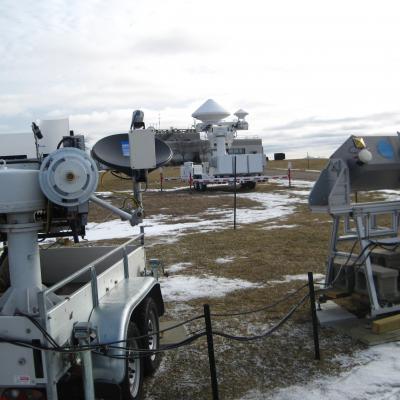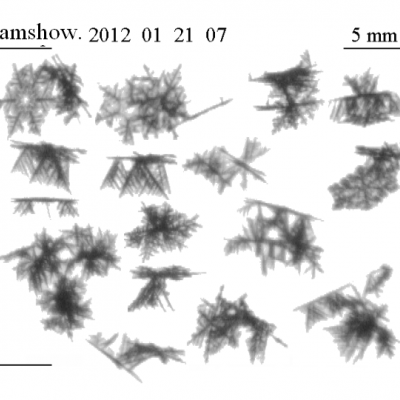Six Week GCPEx Campaign Concludes
February 29 marked the last day of the GPM Cold Season Experiment. After six weeks of no snow, light snow, rain, and some nice heavy snowstorms, the GCPEx team is heading home. The ADMIRARI instrument at the CARE site with blowing light snow (11 Feb 2012) Credit: NASA / Chris Kidd The campaign ended with a big storm last Friday, February 24th, that put all three planes in the air over an eight hour period. They captured a wide array of different types of snow and rain from Eastern New York as the DC-8 flew in from Maine to north of the CARE site in Huronia and Georgian Bay, off of Lake Huron









